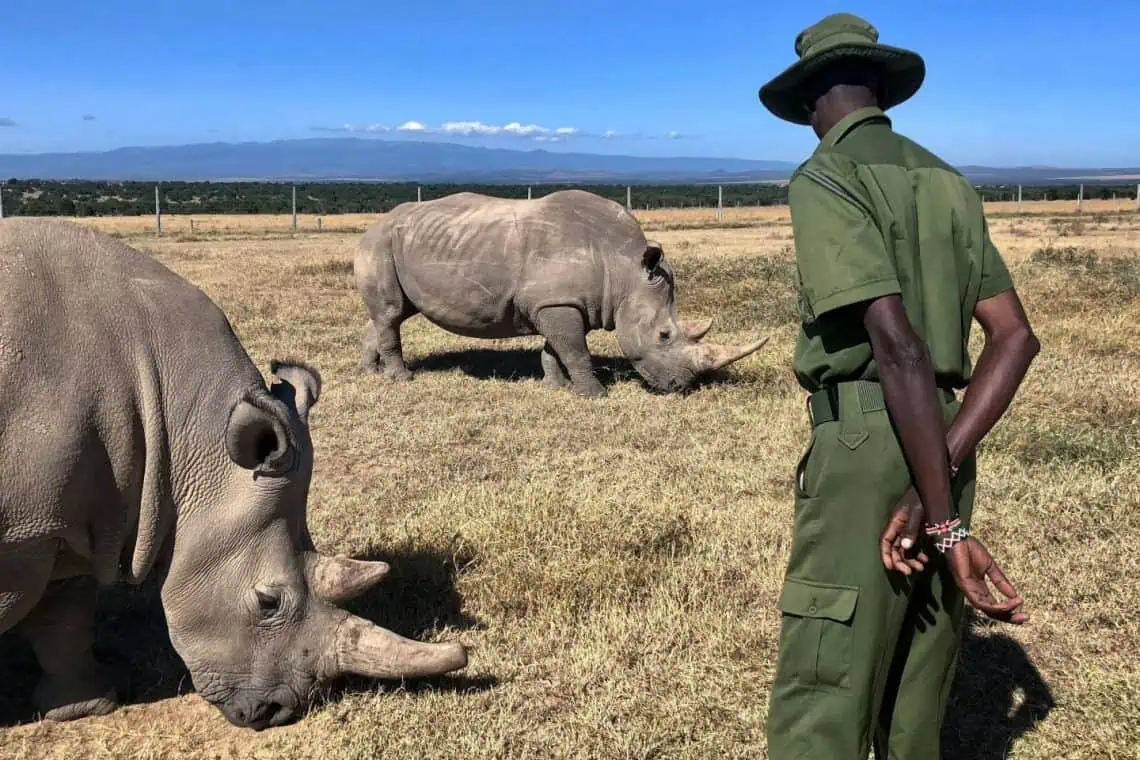As the echoes of World Rhino Day on September 22, 2025, fade into the African savanna, the reality remains stark—South Africa’s rhinos are still under siege. While global celebrations highlighted conservation milestones, such as the birth of 17 calves at Uganda’s Ziwa Rhino Sanctuary, the poaching crisis in South Africa rages on. In the first quarter of 2025 alone, 103 rhinos were killed by poachers, with 65 lost inside national parks—an average of more than one per day. By mid-year, the toll had risen to 195, underscoring the relentless threat facing these ancient creatures. Kruger National Park, home to one of the world’s last significant white rhino populations, stands at the epicentre of this struggle, where rangers risk their lives daily to protect what could be the species’ final stronghold.
The Ongoing Poaching Crisis
South Africa remains the world’s largest rhino range state, with roughly 12,000 white rhinos and 2,000 black rhinos as of 2025. But that abundance has made it a magnet for organised crime syndicates, driven by demand for rhino horn across parts of Asia. Although poaching incidents dropped to 420 in 2024—a 15% decline from 499 the year before—2025 has seen a sharp resurgence, particularly in Kruger. In January alone, 17 rhinos were lost, as syndicates adapted their tactics to target even dehorned animals. KwaZulu-Natal reserves have also been hit hard, accounting for most of the remaining cases alongside Kruger. Conservation experts warn that with some populations now below viable thresholds, genetic diversity and breeding potential are under serious threat.
The drivers of this crisis are complex—poverty, corruption, and powerful trafficking networks. Poachers, often armed with high-calibre rifles and night-vision equipment, infiltrate from neighbouring Mozambique and Zimbabwe. Once the horns are harvested, they fetch prices rivaling gold on the black market, fuelling a brutal cycle of violence that endangers both wildlife and the rangers sworn to defend them.
Rangers on the Frontline
In Kruger’s dense bushveld, rangers are the unsung heroes of this ongoing conflict. Many anti-poaching units include veterans from Africa’s past wars, whose man-tracking skills are invaluable in ambush and pursuit operations. In June 2024, Kruger rangers engaged in a fierce four-day gun battle, killing three heavily armed suspects and seizing rifles, axes, and knives—the grim tools of the trade. Another case in July 2025 saw KwaZulu-Natal police arrest three poachers caught with unlicensed rifles and a freshly severed horn after overpowering guards and killing a rhino.
But the struggle isn’t only against external threats. Reports in 2025 revealed troubling cases of ranger collusion with syndicates, driven by low pay and corruption. One high-profile conviction involved regional ranger Rodney Landela, exposed for ties to poaching operations. Despite such betrayals, the majority of rangers continue to uphold their duty with courage and integrity, aided by helicopters, tracking dogs, and integrity-testing programmes. Combined with local education efforts, their work aims to rebuild community trust and reduce the lure of poaching.
Dehorning and Tech: Innovation in Action
As poaching tactics evolve, so too do conservation strategies. Dehorning—safely trimming rhino horns under sedation—has emerged as one of the most effective deterrents. A 2025 study published in Science found that the method reduces poaching incidents by up to 78%. In Ezemvelo KZN Wildlife reserves, dehorning led to an 80% drop in killings. Programs at Sibuya and Phinda game reserves have refined humane methods ensuring rapid recovery, giving rhinos a fighting chance while horns naturally regrow.
Technology is amplifying these gains. GPS collars on rhinos and other wildlife trigger real-time alerts for rapid ranger deployment. The International Rhino Foundation has funded next-generation tracking systems for dehorned animals, while South Africa’s National Integrated Strategy to Combat Wildlife Trafficking enhances coordination among government, NGOs, and private reserves. Alongside rewilding projects and IVF breakthroughs in Kenya, these innovations point toward cautious optimism.
Lessons from Yellowstone’s Past
Wildlife conservation battles aren’t confined to Africa. More than a century ago, Yellowstone National Park in the United States faced its own poaching crisis. Established in 1872, it suffered rampant hunting until the 1894 Lacey Act—the first federal wildlife protection law—was enacted. By 1900, unchecked poaching had reduced the bison population to just 25 animals, mirroring the precarious state of today’s rhinos.
Modern Yellowstone still faces challenges—from unprosecuted grizzly bear killings to illegal mountain lion hunts—but its eventual success in restoring bison herds demonstrates that recovery is possible. The lessons are clear: strong law enforcement, public support, and community involvement are the foundation of sustainable conservation. These same principles are now being echoed in Kruger’s ongoing war against poaching.
Global Demand and the Illegal Trade
At the root of the crisis lies global demand for rhino horn. Though international trade has been banned under CITES since 1977 and China outlawed domestic horn sales in 1993, illegal trafficking persists. Rhino horn continues to be sold as a luxury or traditional remedy, despite having no proven medical value. In 2025, South African authorities charged six suspects in a smuggling ring linked to Vietnam and China, part of a black market worth billions.
Seizures such as the 18 horns confiscated in Malaysia earlier this year show shifting routes and methods. Experts caution that legalising trade could exacerbate laundering risks, making enforcement even harder. Instead, demand-reduction campaigns and coordinated international prosecutions—like the conviction of Mozambican poaching kingpin Simon “Navara” Valoi—are key to dismantling networks and changing attitudes.
As the dust settles on World Rhino Day 2025, hope persists amid the struggle. From Kruger’s rangers and dehorning innovations to cross-continental lessons in wildlife recovery, the fight for rhinos continues to define the frontier between extinction and survival. With global cooperation and unrelenting commitment, the world’s last giants may yet endure.
